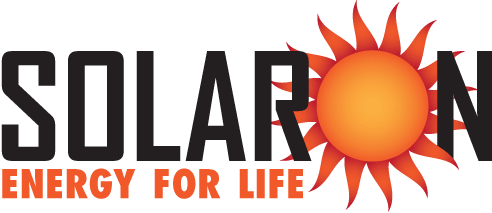
Daylight Hours versus Peak Sun Hours
With an A+ rating from the Better Business Bureau and decades of experience, Solaron is a prime resource for anyone looking at photovoltaic panels for their home. We’ve helped thousands of businesses and residences benefit from solar energy use. In so doing, we sometimes hear certain misnomers when people consider solar power. One of those misnomers is how long solar panels operate.
The Difference Isn’t Night and Day
Some people believe that solar panels work from sunrise to sunset, or what we call daylight hours. Technically, any time photovoltaic cells catch sunlight, they can generate a certain amount of power. When the sun is not shining directly or fully on the photovoltaic cells, however, it’s not as potent. For your solar panels to work at their best, they need to receive the greatest intensity of sunlight for the longest duration possible. To illustrate, consider a mill with a water wheel sitting on a riverbed. As the level gets lower during a dry season, there’s less water to turn the wheel. The wheel might continue to turn slowly, but it won’t be as productive until the water returns in force. It’s similar with solar panels — you need a strong amount of sunlight flowing through them to keep them cranking out maximum power.
That’s where the concept of peak sun hours come in. Sun hours are different than daylight hours. Sun hours are measured by the amount of time that there is enough available sunlight to produce 1,000 watts of photovoltaic power per square meter. These peak hours happen when the sun is high above your panels. As it crosses the sky, the sun angles to a point where the amount of sunlight increases to reach that 1000-watt threshold, or it decreases until it drops below the threshold.
In the northern hemisphere, the number of peak hours increase depending on how close you are to the equator. Being further south slightly increases peak sun hours, whereas further north results in less. It also means you’re likely to have more peak hours during summer months and less in winter. Not only that, but some areas get shaded in the morning or evening. Peak sun hours are reduced due to shadows across the panels. Weather is another common factor in determining the number of sun hours. It you live in an area that gets shrouded by fog or becomes overcast regularly, it diminishes your peak sun hours.
Crunching the Sun Hours Numbers
In 2019, homes in the US consumed an average of 877 kilowatt hours per month, or 29 kilowatt hours per day. Accounting for all the factors coming into play, the average solar panel installation needs about 4 peak sun hours per day to produce the necessary power. Since the average amount of peak sun hours available in California is 5.8 hours, you get more than enough to make sure your solar panel system is a worthwhile investment!
Of course, there are other misnomers about how solar panels work, but Solaron is here to help you get the truth. We have years of experience installing, maintaining and monitoring SunPower Solar panels that decades later are doing the job for their owners. We know their capabilities and can properly set your expectations. Please give us a call or schedule a free consultation using our online form. You’ll see that the difference between the facts and the misconceptions are as clear as night and day.

